“You can represent yourself with clothes you can’t in any other way.”
Premise
Giving people more insights about their closet by making art from it.
Synopsis
The fast fashion industry is becoming one of the biggest threats to our environment. People are buying 5 times more clothing than two generations ago. It’s important to try to stop this habit. In this project, I find ways to give people an overview and have them become inspired by their own closet by playing with different ways to visualize it. The reason for this is because the best way to be more sustainable with your clothes, is to reuse them. Different experiments have been done and beginning prototypes have been made and tested with users who had different opinions because their closet is a very personal thing. At the end, a prototype has been created that perseveres this personal connection.
Research
Problem space
Fast fashion is a business model to manufacture clothing with unethical work methods and work in ways that are damaging to the climate (Cassidy & Bennett, 2012). To give an example, the fashion industry is the second largest polluter of water. When dyeing clothes, the water is dumped in rivers which are sources for both people and animals. This could have severe effects, because the chemicals provoke damage to the person or animal that digests them. On top of that, the fashion industry used 1,715 million tonnes of CO2 in 2015 and is expected to have increased with 63% by 2030 (Gecseg, 2019).
I find this problem extremely worrisome to the point I stopped buying new clothes in general. However, not everyone can flip this switch. To put this into perspective; we’re buying 5 times more clothing than our grandparents did (Williams, 2020). People are buying clothes just because they’re there, or because of a discount or free shipping. The bottom line is that people are getting seduced to buy fast fashion clothing each day (Cocozza, 2019) and it’s important to find ways to help people to avoid buying new clothes.
Further research
The best way to be more sustainable with fashion is to not buy anything at all. Even the most conscious garments use resources for production and transport, creating some environmental impact. People tend to think buying new clothes will make them happy again with their closet (Williams, 2020). However, the reality is that they will wear the same couple of garments in rotation until they buy something new (The Business of Fashion Ltd. & McKinsey & Company, 2017). Therefore, it’s important to give them an overview in some way and make them inspired again by their own closet. One of the most common ways people get inspiration from is art (Martinez, 2017), so that’s where I will start.
How do people organize their closet?
Due to the first feedback conversation with Joanna, I started to research how people tend to organize their closet. They do this in two ways: by category and by color. For this project, I decided to use the color organizing method because I felt like it was a more feasible option to experiment with for the couple weeks we had left, and I felt like I could be more creative with it. On top of that, I was inspired by the Runway Palette which helped me in thinking of ways I want to experiment with to categorize clothing visually and give an overview.
Design Process
First iteration
At the beginning of the design process, I started to look at ways I can visualize the closets. Soon I found out about generative art and started to experiment with processing:

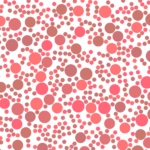

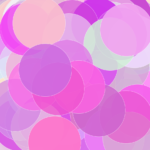
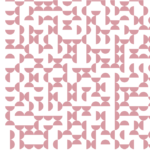
It was quite cool, and it gave me the right input to realise what is possible. However, these were random numbers and colors and I had questions how it would work with colors that were generated from a picture.
Next, I started to look at ways I can extract colors from images. Soon I found out about OpenCV. I watched a couple tutorials on how to extract colors from images. Fortunately, it was easier than expected and within two days I could open images and extract colors from them.
The image: The code and extracted colors:
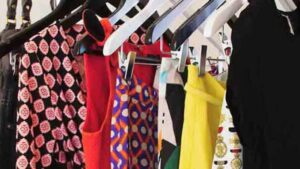
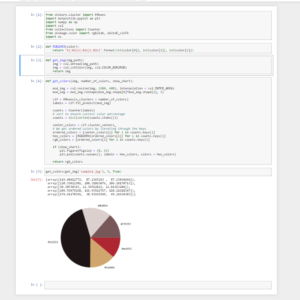
Another example:
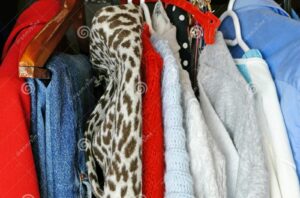
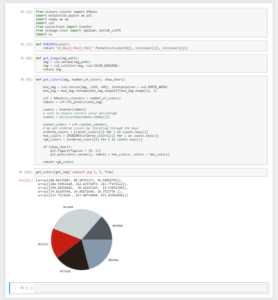
But then I stumbled upon my next and biggest problem. The colors that were extracted from the image couldn’t be read because they were stored into an array. While researching how to work around this problem, I stumbled across Turtle, which is a library that enables users to create pictures. I found out Turtle can only use specific colors and found trinket.io. I compared those colors with the colors I extracted and continued to experiment with the technology and created some sketches:
I tested the designs with two people. The answers they gave me were quite similar. They told me they liked the idea and thought it was creative, however it was too early (too sketchy) to tell if it would help them be inspired.
Insights for the next iteration:
- Try to find a way to directly implement the colors from the image into the sketch.
- Need to find other ways to visualize the closets.
Second iteration
During the second iteration the focus was to find a way to implement the extracted colors into a visualisation without manual input. After some research and watching tutorials, I found a code that helped me. The code changes the array into a list.

The code crashed with Turtle. To avoid more issues, I started to look at other technologies. One being matlib. This experiment was not necessarily based on anything, but me trying to experiment with directly implementing colors into a visualization. This time it worked. However, because of the nature of the visualization it displayed the distribution of the colors in RGB values instead of displaying the actual colors.
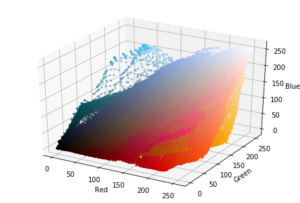

I felt hopeless at this point because I tried everything to make my concept work, but I didn’t know if the implementation just wasn’t possible, or the technologies didn’t fit enough.
Still, I decided to share these experiments with users. I showed them the images and to my surprise they liked the sculpture idea more than the abstracted images from before. A problem occurred though. Some of the participants explained that they might have tendencies to add more colors to their closet so they could see what it would do to the representation.
Then something magical happened and one of them told me: “It’s creative and useful because usually your closet is in colors that represent you as a person.” Out of nowhere it hit me. I can’t just make random art that doesn’t mean anything to someone. People like art because it tells a story. It means something (Rose, 2017) and I believe it needs to play in my concept to make it work.
Insights for the next iteration:
- Find a more personal way to visualize the closet.
Third iteration
Out of nowhere I got the idea to start working with personal pictures and use the colors of the wardrobe in a pop art style. Fortunately, OpenCV has a way to achieve this through an halftone effect. The only downside to it is that it can only use two colors at a time.
Then another problem occurred: the colors that were extracted couldn’t be used automatically anymore. However, I decided to try to put my coding knowledge to the test once again and try to figure out how to solve it based on the code from the second iteration. It got me to the point where I got a random color from the list of extracted colors, but I wasn’t there yet.
I did not know what to do and the internet didn’t help. So I asked Ilona to help me to solve the issue and it worked. And then it didn’t. The colors were extracted and two colors were used for the background and the dots however, the output picture was black and I’m still unsure what the problem is.
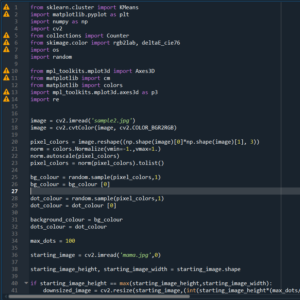

Picture used:
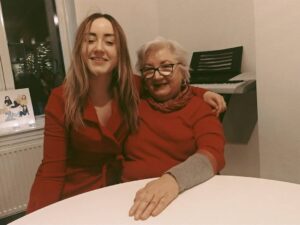
Output with manual input: Output with automatic input:

On top of that, I didn´t have enough time to further develop this concept by using all the colors of the wardrobe combined with OpenCV face recognition. However, I did want to start with the prototype to give an example of how the code would look like. To be able to work with more colors, it’s important for the model to recognize not only a face, but also attributes so it can give each attribute a different color. This is hard to accomplish and if I’m completely honest, quite a bit out of my expertise when it comes to coding, but with a bit of help and watching tutorials I managed to extract and label different regions of the face and even color it.
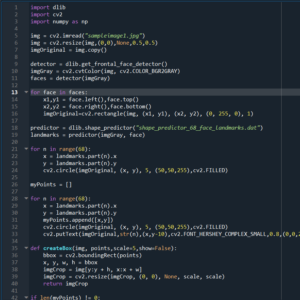
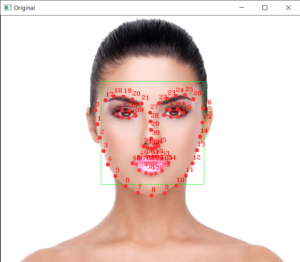
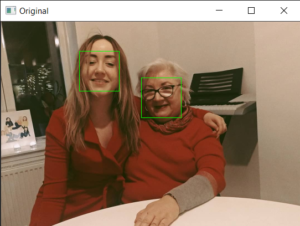
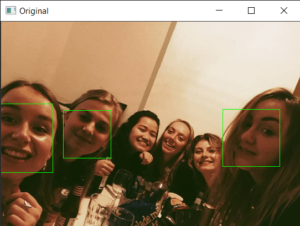
The prototype has still some issues. Not all faces are recognized for example. And when they are recognized they have some trouble finding and coloring the face attributes.
When I showed the users their pictures and explained what the next steps were, they were enthusiastic. However, it didn’t make them more inspired by their own closet. Instead, it gave them a better overview of their closet and they would be less likely to buy similar clothes. Also, by using personal pictures they believe it gives a more sentimental value to their clothing and are more likely to wear the clothes and less likely to throw them away.
Conclusion, reflection and discussion
The original intention of the prototype was to make the target audience more inspired by their own closet. However, the outcome and the last insights were different than expected. The last prototype definitely is an improvement and fortunately gives value to the problem, but it doesn’t solve it. During this project I started to realise people needed to be confronted with their behavior and how it affects the environment. Something that might be interesting for the future.
During this process I felt very enriched. I learned a lot about these different technologies which will also help me during my graduation project. I have still a lot to learn and might never be as good in these technologies like some of my peers, but I am eager to learn and I won’t quick until I have found some sort of solution. I think I have shown that during this project.
References
Cassidy, T. D., & Bennett, H. R. (2012). The Rise of Vintage Fashion and the Vintage Consumer. Fashion Practice, 4(2), 239–261. https://doi.org/10.2752/175693812×13403765252424
Cocozza, P. (2020, September 23). ‘Don’t feed the monster!’ The people who have stopped buying new clothes. Retrieved from https://www.theguardian.com/fashion/2019/feb/19/dont-feed-monster-the-people-who-have-stopped-buying-new-clothes
Gecseg, O. (2019, June 8). What is Fast Fashion doing to the planet, its people, and our state of mind? Retrieved from https://www.the-sustainable-fashion-collective.com/2020/02/09/what-is-fast-fashion-doing-to-our-planet-our-people-and-our-state-of-mind
Martinez, N. P. L. (2017, July 15). How Do You Find Inspiration? 10 Ways to get inspired! Retrieved from https://www.huffpost.com/entry/how-do-you-find-inspiration-10-ways-to-get-inspired_b_5946bd87e4b024b7e0df4d29
Rose, F. (2017, June 4). The Art of Immersion: Why Do We Tell Stories? Retrieved from https://www.wired.com/2011/03/why-do-we-tell-stories/
The Business of Fashion Ltd. & McKinsey & Company. (2017). The State Of Fashion 2018. Retrieved from https://cdn.businessoffashion.com/reports/The_State_of_Fashion_2018_v2.pdf
Williams, L. (2020). How can we reduce our Fashion Environmental Impact. Retrieved from https://www.sustainyourstyle.org/en/reducing-our-impact